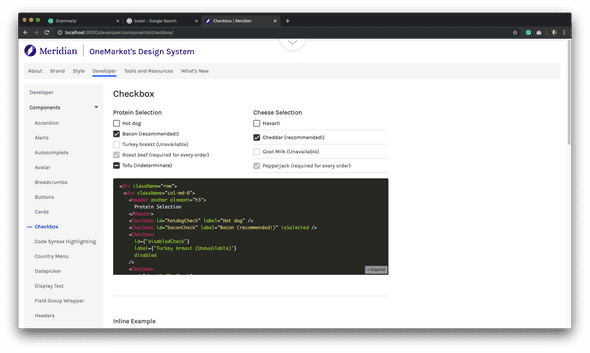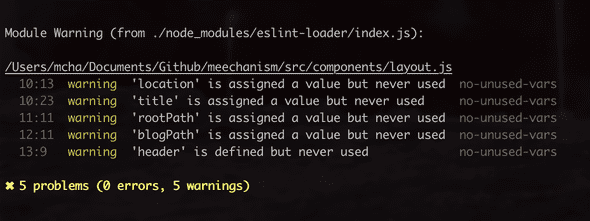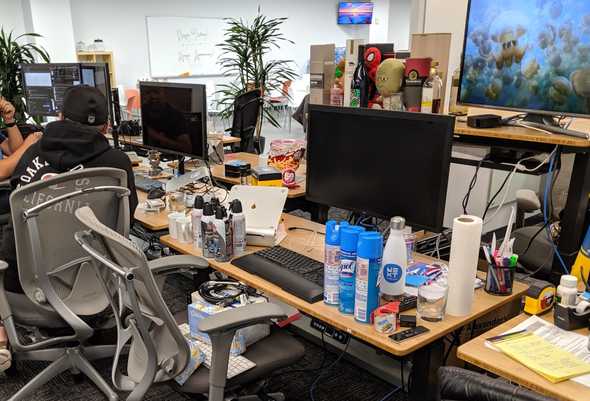Addressing Front-End Pipeline Frustrations
May 01, 2018
My entrance to the engineering team was a bit non-standard. I joined the organization as a front-end developer on the Customer Experience (CX) team with the hopes of creating and maintaining the component library for engineering to use.
I did that.

And then the CX team dissolved and I was pushed into engineering proper. I was okay with this, as it meant I was going to work on actual products and work with a team of other engineers. Very much immediately I found out how much of a mess the organization was regarding how little they knew about front-end development.
To properly organize my thoughts in prep to share with the director of engineering, I outlined and presented my observations as described below.
Yes, I called it “pipeline issues” because the chain of processing requests was a hot mess/non-existent. Yes, I was fed up and made a meeting with people who could do something about this and fix it. The lack of processes, standards, and expectations deeply affected productivity, attitudes, and inter-team relationships.

Front-end Pipeline Issues
I found the following types of issues reoccur and attempted to define them as a stepping stone to help find solutions. The problems section will use these to help determine what type of issue they fall under.
Types of Problems
- Process: There seems to be a lack of defined and/or standard processes in which all teams follow. If there is a best practice to do something, is it shared across all teams? e.g. Is there a defined process to get from point A to point B?
- Education/training: If someone doesn’t know how to do x-thing, is there a resource where they can learn? This can be either a person, documentation, resource or learning platform/service. If it is a person, are we being respectful of his/her time and set up expectations? If it is documentation, is there a maintainer, or is it available via a third party?
- Communication: Are all of the parties involved on the same page in terms of understanding a problem, process, and/or state of x? How long does it take to communicate something (whether simple or complex) across teams to make it effective? (Spoiler alert: usually too long). Are there simple means of getting what you need? Are the specs on a ticket enough to be productive?
- Accountability: Sometimes it is unclear who is in charge, runs expectations, and/or figures out the next steps. This makes it difficult to determine where the source of truth is and can block people from working.
- Tooling: It seems at times individual contributors don’t have the correct tools and resources to help them fulfill their tasks. Most times, this can probably be resolved with some education/training.
- Resource: Do teams have the resources they need to be productive and meet deadlines? This can be developer resources, support, design, and everything in between.

Actual Problems
The following problems list actual examples the team faced. The type of problem is listed after each.
- When and how does a designer review and/or approve dev work? (process)
- Is it acceptable for designers to still go through iterations during developer work? (e.g.: What are the expectations for when things get stable for a release and who is in charge of defining this? Can we get this standardized?) (accountability/process)
- Developers need basic HTML/CSS knowledge and understanding of the box-model (not related to the component library) and grid. (education)
- How does one file bugs/stories for the component library? What are the expectations? Who is in charge of fixing/adding things? (accountability/tooling)
- What are the expectations for debugging components? Should developers all know how to debug their app before pinging the cx-frontend channel? (training)
- Are developers allowed to introduce new UI/styles/states to the products? Who gets to OK the introductions? (accountability/training)
- Why/when does a product have to be designed/built a certain way (eg: login). Who is in charge of communicating this across teams? (accountability/communication)
- What are the standard tools the teams should be using? Is there a standard? Is it needed? Why or why not? If there are already tools, why were they chosen? (tooling)
- Should UI developers be building something before the design and/or stories are fully fleshed/specced out? If so, to what extent and what are the caveats? (process)
- What is the minimum requirement of the specification of the work required for front-end stories? (communication)
- Should the backend APIs/instrumentation layer be built before front-end tasks are worked on? Should there be a process to set up data contracts, even if the APIs don’t exist so the front-end doesn’t get blocked by data? When does this happen? (process)
Follow-up
Various leads from different teams came together once a week to align matters, discuss, and resolve any problems. It turns out many issues exist because of the sheer lack of communication.

If your team is experiencing similar types of issues or problems above, I do recommend getting people together to acknowledge the existence of said problems. Talking is the first step.
Tags:work
